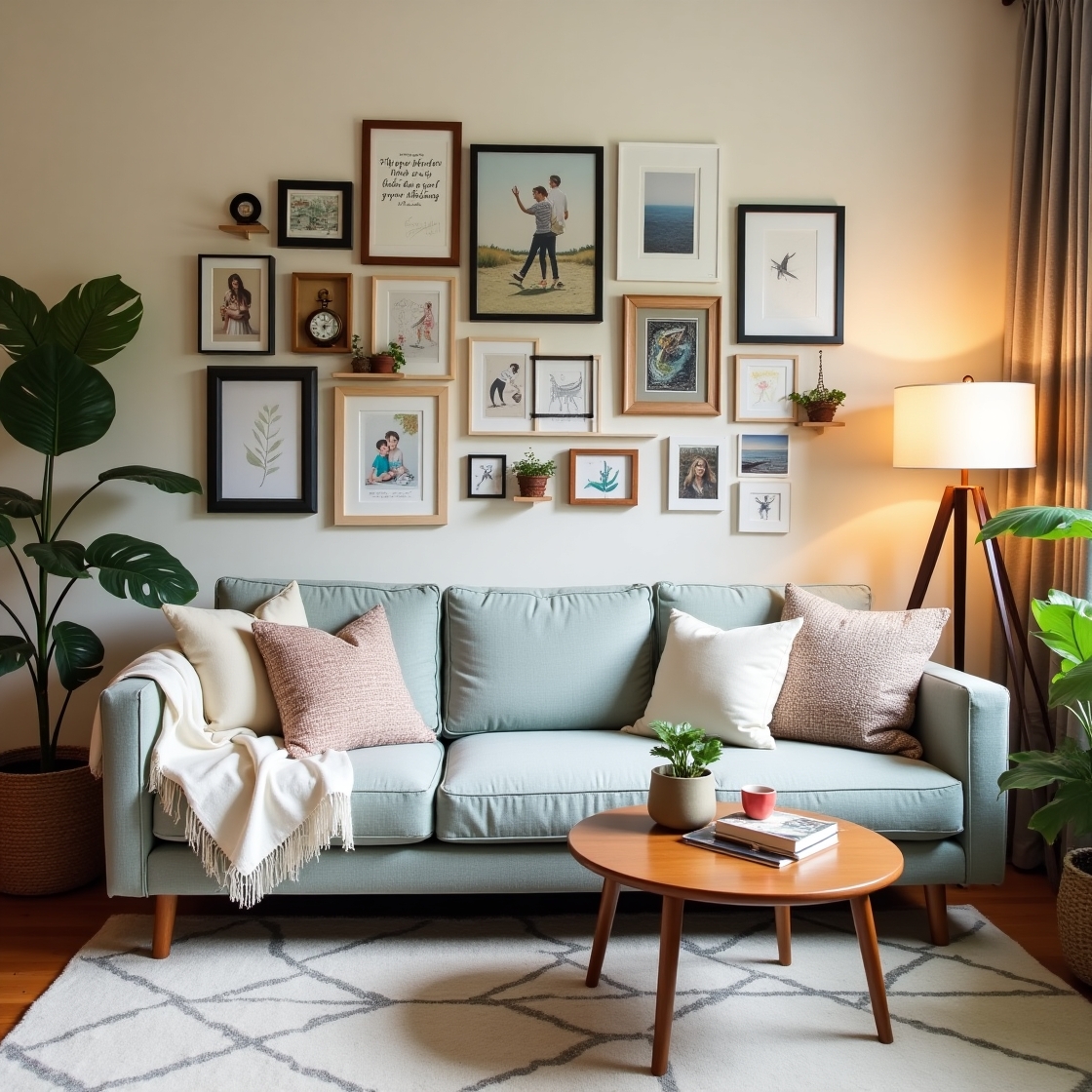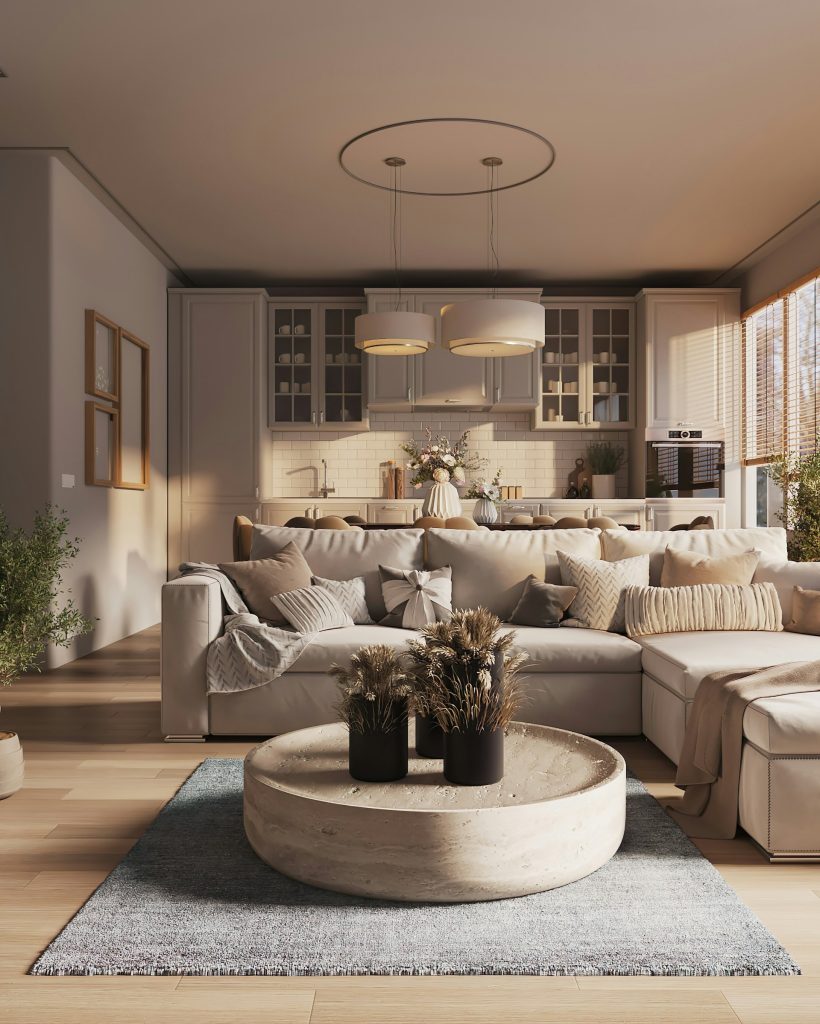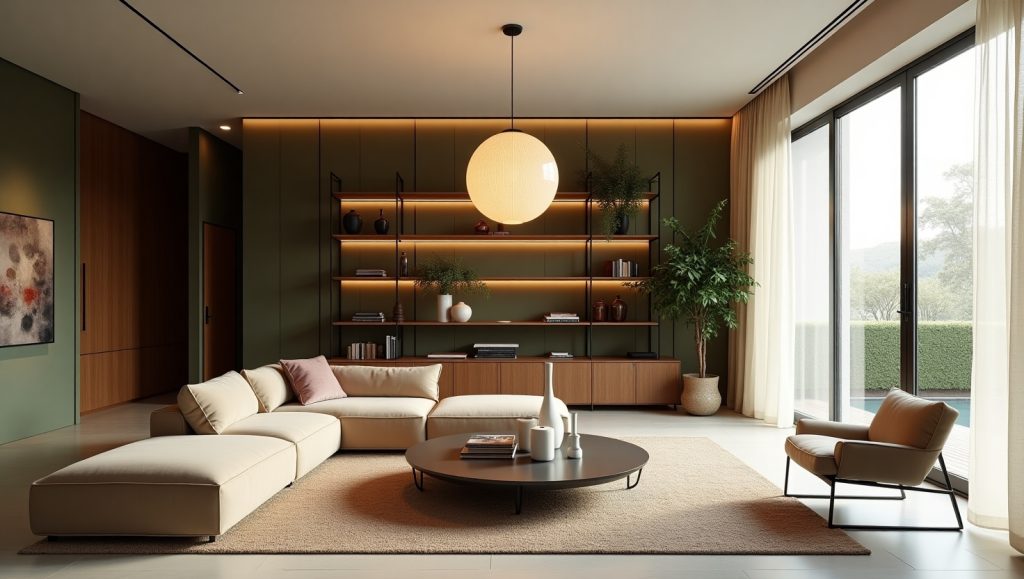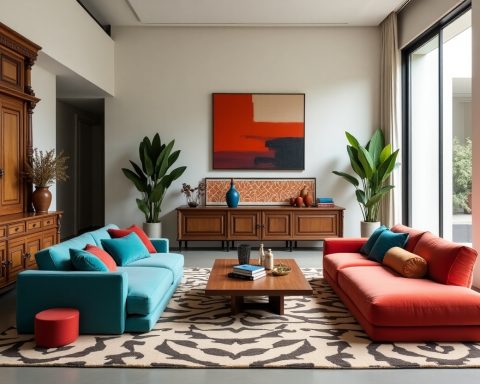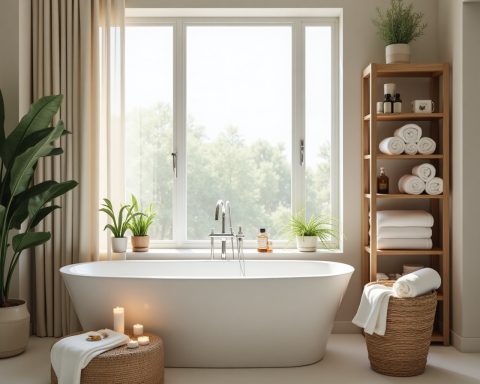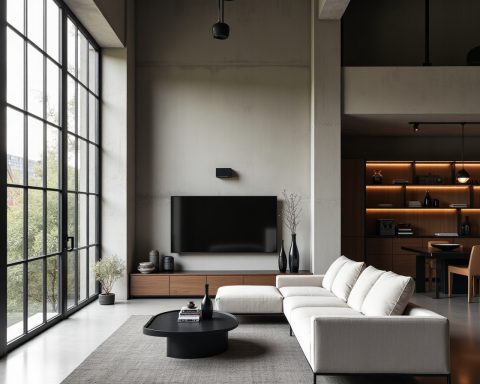Your home is a deeply personal space, a sanctuary that reflects your unique journey, experiences, and passions. Beyond its functional purpose, it holds the potential to narrate your life story, and one of the most compelling mediums for this visual storytelling is the art you choose to adorn your walls. Thoughtfully curated wall art transcends mere decoration; it becomes a collection of visual cues that whisper tales of your travels, celebrate significant milestones, express your deepest interests, and ultimately reveal the essence of who you are.
This comprehensive guide will illuminate the art of using your walls as a canvas for your personal narrative. We will explore how carefully selected pieces, arranged with intention, can transform your house into a captivating visual autobiography, inviting both yourself and your guests to connect with the rich and evolving chapters of your life. From reflecting on your past and expressing your present passions to creating cohesive visual dialogues and allowing your story to unfold organically, we will delve into the multifaceted ways in which wall art can become a powerful and deeply personal form of storytelling within your home.
Here’s how to effectively use wall art to tell a story within your home:
1. Reflect Your Personal Journey and Experiences:
- Travel Mementos: Transform cherished travel memories into visual anchors by framing postcards from memorable destinations, displaying maps of significant locations you’ve explored, or showcasing your own captivating travel photographs. A dedicated gallery wall can become a vibrant testament to your adventures, sparking conversations and evoking fond recollections.
- Life Milestones: Mark significant life events by displaying artwork that commemorates graduations, weddings, the arrival of children, or other pivotal moments. These pieces evolve into visual touchstones, anchoring you to important chapters in your personal history.
- Heritage and Roots: Connect with your cultural identity and family history by showcasing art that reflects your heritage. This could encompass traditional prints, cherished family portraits passed down through generations, or contemporary pieces inspired by your ancestry, creating a tangible link to your past.
2. Express Your Passions and Interests Visually:
- Hobbies and Pursuits: Let your walls speak to your passions. If music moves you, consider framing vintage concert posters of beloved artists or iconic album art. For the literary soul, display inspiring literary prints or evocative book illustrations. Curate art that visually represents your hobbies, whether it’s dynamic surfing photography capturing your love for the ocean, delicate botanical prints celebrating your green thumb, or abstract pieces that resonate with your inner artist.
- Values and Beliefs: Art can be a powerful expression of your core values. Choose pieces that align with your convictions, whether they are socially conscious prints advocating for change, breathtaking nature photography emphasizing environmental conservation, or spiritual iconography that holds deep personal significance and provides a sense of grounding.
3. Curate a Cohesive Narrative Through Style and Theme:
- Consistent Aesthetic: While your personal story is inherently unique, strive for a degree of visual harmony in your art selections. This could manifest through a consistent color palette that flows throughout your collection, a preference for specific artistic styles (such as minimalist simplicity, the charm of vintage aesthetics, or the evocative nature of abstract forms), or a unified approach to framing choices, creating a sense of deliberate curation rather than a haphazard assembly.
- Thematic Connections: Weave together a more profound narrative by grouping artwork around specific themes that deeply resonate with you. This could involve a nature-inspired theme, where landscapes and botanical illustrations create a cohesive visual dialogue, a focus on portraiture that explores the diverse facets of the human experience, or an exploration of abstract forms and colors that evoke specific emotions and ideas.
4. Use Different Rooms to Tell Different Chapters of Your Life:
- Entryway: Setting the Stage for Your Story: The art that graces your entryway offers the initial glimpse into your personality and the overall atmosphere of your home. Consider selecting welcoming pieces that reflect your general aesthetic or a single, impactful piece that holds particular personal significance, inviting guests into your narrative.
- Living Room: Shared Stories and Collective Experiences: As a communal space, your living room can showcase art that represents shared family experiences, collective interests, or pieces that spark engaging conversations among guests, creating a visual tapestry of shared memories and connections.
- Bedroom: Intimate Narratives and Personal Reflections: Your bedroom serves as a more private sanctuary, and the art within should reflect your individual tastes, dreams, aspirations, and sources of comfort and inspiration, offering a glimpse into your innermost world.
- Dining Room: Celebrating Togetherness and Shared Moments: Enhance the dining experience by considering artwork that evokes feelings of warmth, connection, or even subtly alludes to culinary themes, creating a visual backdrop for shared meals and conversations.
- Home Office: Fueling Inspiration and Focused Energy: Choose art for your workspace that actively motivates, sparks creativity, or provides a sense of calm focus, contributing to a productive and inspiring environment for your endeavors.
5. Create Visual Flow and Connection Through Arrangement:
- Varying Sizes and Arrangements: Introduce visual dynamism by strategically using a mix of large, commanding statement pieces alongside smaller, complementary works. This variation guides the eye through the space, creating a more engaging and layered visual narrative.
- Gallery Walls with Purpose: When curating a gallery wall, arrange the pieces in a manner that tells a visual story. Consider the relationships between the different artworks in terms of their subject matter, color palettes, artistic styles, or the emotions they evoke, creating a cohesive and meaningful display.
- Consider the Power of Negative Space: The empty wall space surrounding your art is as crucial as the art itself. It provides visual breathing room, allowing each piece to stand out and preventing the wall from feeling cluttered, ensuring that each individual story is clearly and effectively articulated.
6. Embrace the Organic Evolution of Your Narrative:
- Art as a Living Chronicle: Recognize that your tastes, experiences, and perspectives will inevitably evolve over time, and your wall art collection should reflect this dynamic process. Feel empowered to rotate pieces in and out of display, introduce new acquisitions that resonate with your current life stage, or even creatively repurpose older artwork to give it new meaning within your evolving narrative.
- Prioritize Meaning Over Mere Matching: While visual cohesion contributes to a harmonious aesthetic, always prioritize pieces that hold genuine personal significance over those that simply happen to match your furniture. Authenticity is the cornerstone of telling a truly compelling and heartfelt story through your art.
- Embrace the Freedom to Experiment: Don’t be afraid to explore different arrangements, create temporary groupings, and even experiment with unconventional placements to discover what feels most authentic and resonant with your current personal narrative.
7. Consider DIY and Personalized Creations: Adding Your Unique Voice:
- Your Own Artistic Expressions: Never underestimate the profound impact of displaying your own creative endeavors. Showcasing your paintings, drawings, photographs, or other artistic creations adds an undeniably personal and deeply authentic chapter to your home’s visual story.
- Children’s Art: Celebrating Growth and Family: Proudly displaying your children’s artwork not only celebrates their burgeoning creativity but also beautifully chronicles the story of your family’s growth, development, and shared artistic journey.
- Custom and Commissioned Pieces: Consider commissioning artwork from artists whose style resonates with you or creating personalized pieces that incorporate meaningful quotes, significant dates, or locations that hold deep personal value, adding bespoke elements to your narrative.
8. Pay Attention to Framing and Presentation: Enhancing the Narrative Details:
- The Frame as a Chapter Marker: The style and material of the frame you choose can significantly enhance the narrative of a piece. An ornate vintage frame can underscore the history of an antique print, while a sleek, minimalist frame can complement the clean lines of a contemporary photograph, adding subtle layers to the story.
- Consider the Impact of Matting: The matting surrounding a piece of art serves to draw the viewer’s eye inward, giving the artwork greater prominence and highlighting its significance within your overall visual story. The width and color of the mat can subtly influence the perceived importance and aesthetic of the piece.
- Hanging with Intentionality: The height at which you hang your art is a crucial element of presentation. While eye-level is generally a good guideline, consider the specific context of the room and the intended viewing experience. A large, commanding statement piece might benefit from a slightly higher placement, while a series of smaller, more intimate works might be grouped closer together for a more personal connection.
9. Let Your Art Spark Conversation and Connection:
- Strategic Placement in Gathering Spaces: Intentionally position pieces with particularly compelling stories, unique origins, or intriguing details in areas where you frequently entertain guests, such as the living room or dining room. These pieces can serve as natural conversation starters, inviting you to share the narratives behind your cherished collection.
- Be Prepared to Share Your Stories: Embrace the opportunity to talk about your art – where you acquired a particular piece, what drew you to it, or the personal story it represents. Sharing these connections deepens the storytelling aspect of your collection and allows guests to gain a more profound understanding of your personal narrative.
10. Embrace Imperfection and the Beauty of Organic Evolution:
- Your Story is a Work in Progress: Resist the urge to strive for a perfectly curated and static art collection from the outset. Recognize that your life and your personal narrative are constantly unfolding, and your wall art should reflect this dynamic and organic process. Allow your collection to grow and change alongside you.
- Trust Your Instincts and Emotional Resonance: Ultimately, the most compelling stories told through wall art are those that genuinely resonate with you on a deeply personal level. Choose pieces that you are drawn to and that speak directly to your soul, even if they don’t perfectly adhere to a preconceived aesthetic or design trend. Authenticity is the cornerstone of a truly meaningful visual narrative.
- Don’t Be Afraid to Experiment and Refine: Embrace the freedom to try out different arrangements, create temporary groupings of pieces, and even experiment with unconventional placements. Allow yourself the space to refine your visual storytelling over time as your tastes evolve and new chapters unfold in your life.
11. Incorporate the Power of Text and Typography:
- Words as Direct Storytellers: Consider incorporating artwork that features meaningful quotes, evocative song lyrics, or significant dates that hold personal resonance. These pieces can directly communicate important aspects of your personal story, your core values, or defining moments in your life.
- Typography as a Visual Art Form: Recognize that well-designed typography can be visually striking in its own right, adding another layer of meaning and aesthetic interest to your wall’s narrative. A beautifully lettered quote or a graphic representation of a significant word can be a powerful storyteller.
12. Use Lighting to Highlight Key Narrative Elements:
- Strategic Spotlights and Accent Lighting: Employ directional spotlights or carefully placed accent lighting to draw deliberate attention to particularly significant pieces within your art collection, visually emphasizing their importance in your overall personal story and ensuring they become focal points.
- Ambient Lighting to Set the Mood and Tone: Understand that the overall ambient lighting within a room can subtly influence how your wall art is perceived and the emotions it evokes in viewers, contributing to the overall atmosphere and tone of your visual narrative. Consider how different lighting levels and color temperatures can enhance the storytelling.
13. Consider Incorporating Three-Dimensional Art and Objects:
- Adding Tactile and Visual Depth to Your Tale: Explore the possibility of incorporating sculptures, unique wall hangings, or other three-dimensional art pieces into your collection. These elements add another layer of sensory engagement (both tactile and visual) to your storytelling, creating a more dynamic and multi-faceted narrative.
- Objects with Inherent History and Backstories: Consider incorporating found objects, cherished heirlooms, or collected artifacts that possess a strong visual presence and carry their own unique histories and backstories, adding layers of intrigue and personal connection to your walls.
14. Tell a Story Through the Power of a Series:
- Following a Cohesive Thematic Exploration: Display a carefully curated series of related artworks that delve into a particular theme, explore a specific geographic location, or showcase the evolution of a particular artistic style. This approach creates a more in-depth and cohesive narrative on a single wall or across a series of interconnected spaces within your home.
- Evolution of Taste and Experience Over Time: Showcase a collection of pieces that you have intentionally acquired over a significant period, reflecting the gradual growth and evolution of your personal tastes, your expanding experiences, and the unfolding chapters of your life.
15. Integrate Functional Art with Narrative Flair:
- Beauty Serving a Purpose: Consider incorporating functional items that also contribute to your visual narrative. This could include stylish wall-mounted shelves artfully styled with meaningful objects and books, decorative mirrors with unique frames that reflect more than just light and space, or even creatively designed coat racks that add to the overall aesthetic and storytelling of your entryway.
16. Listen to the Unspoken Stories of Your Walls and Space:
- The Architecture as Context: Pay close attention to the inherent architecture and existing features of your home. Allow the walls themselves – their size, shape, and texture – to subtly inform your art choices and the way you choose to tell your story within that specific context. A grand, expansive wall might call for a single, large statement piece, while a cozy, intimate nook might be the perfect setting for a tightly grouped and personal gallery wall.
By thoughtfully approaching your wall art with intention, considering the diverse stories you wish to convey, and allowing your collection to evolve organically alongside your life experiences, you can transform your home into a rich, engaging, and deeply personal visual autobiography. It’s about curating a space that not only pleases the eye but also resonates profoundly with your soul, inviting both yourself and those who enter your home to connect with the unique and unfolding narrative of your life.
